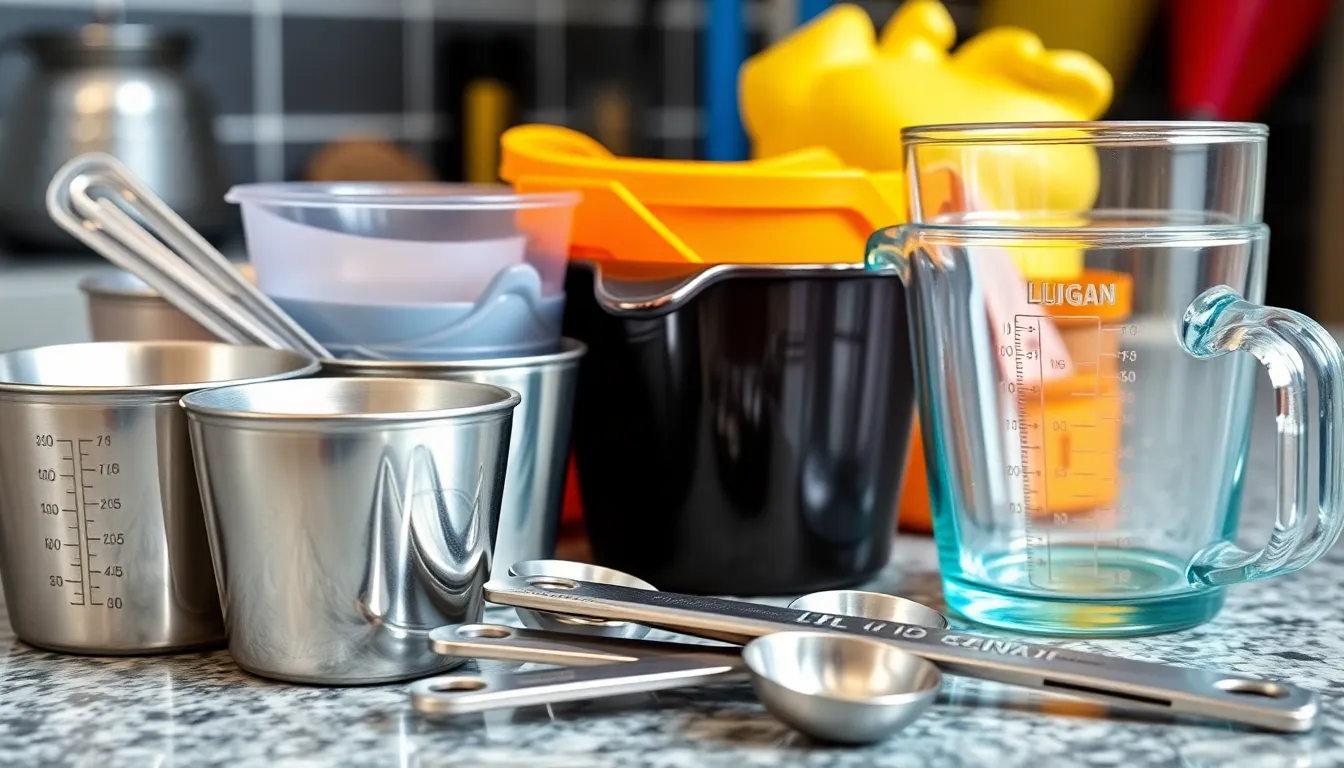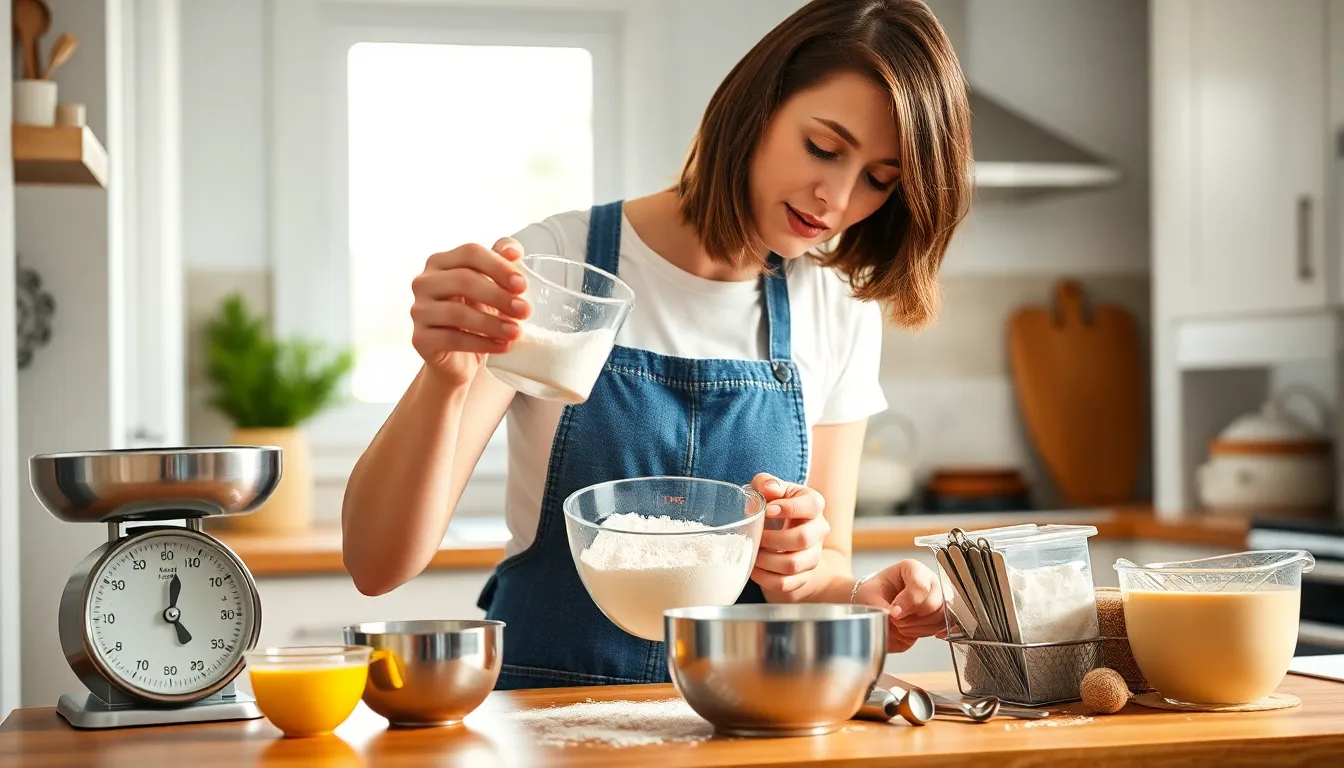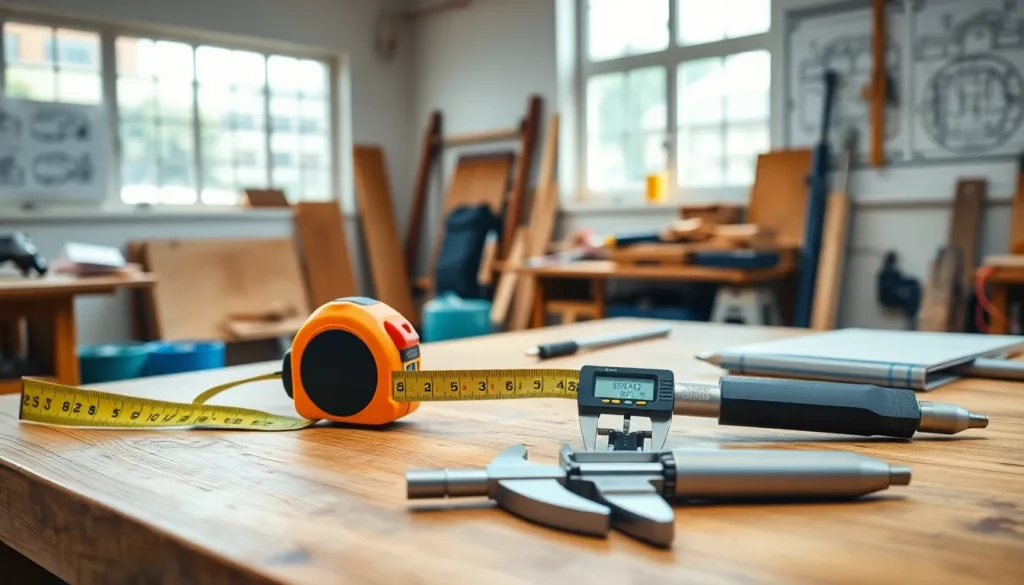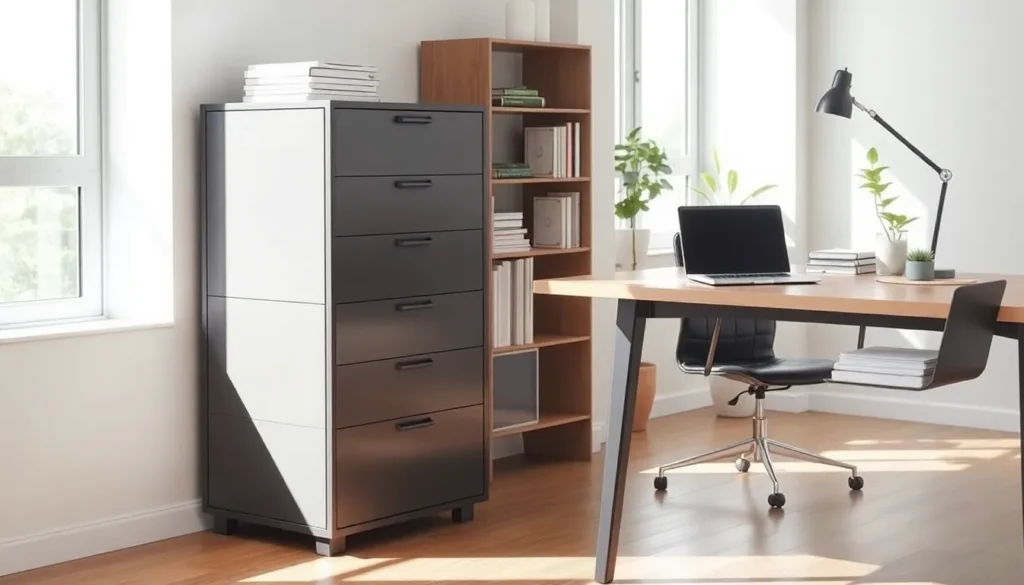In the culinary world, precision is key. Without the right measuring tools, a pinch of salt can turn into a handful, and suddenly dinner’s a disaster. Whether it’s baking a cake or whipping up a savory sauce, having the right instruments can mean the difference between a Michelin-star meal and a kitchen catastrophe.
Imagine trying to bake cookies without a measuring cup—it’s like trying to drive a car without a steering wheel. You might get somewhere, but it won’t be pretty. From spoons to scales, understanding these essential tools not only elevates cooking skills but also brings joy to the kitchen. So let’s dive into the world of measuring tools and discover how they can transform any home chef into a culinary genius, one accurate measurement at a time.
Table of Contents
ToggleOverview of Measuring Tools in Cooking
Measuring tools in cooking provide the precision needed for successful recipes. They come in various forms, each designed for specific ingredients or quantities. Common tools include measuring cups, spoons, and kitchen scales.
Measuring cups are typically used for both dry and liquid ingredients. Standard sizes include ¼ cup, ½ cup, and 1 cup. Accurate measurements contribute immensely to the consistency of dishes.
Measuring spoons serve a similar purpose but are ideal for smaller quantities. They often range from 1 teaspoon to 1 tablespoon. Utilizing these tools ensures proper seasoning and flavor balance in meals.
Kitchen scales allow for exact measurements by weight. They’re especially valuable when working with flour or sugar, where volume can be misleading. Many chefs favor digital scales for their precision and ease of use.
Liquid measuring cups accommodate ingredients like water, oil, or milk. These often feature markings on the side, enabling quick reading of measurements. For best results, using glass or plastic cups designed for liquids reduces inaccuracies.
Thermometers also play a crucial role in measuring. They evaluate the temperature of various dishes, such as meats and baked goods. Achieving the correct internal temperature enhances food safety and quality.
Using the right measuring tools simplifies the cooking process. Chefs find that investing in quality instruments leads to better results. Mastery of these tools transforms everyday cooking into a rewarding experience.
Types of Measuring Tools

Measuring tools in cooking come in various types, each serving specific purposes. Understanding these tools enhances precision and improves overall culinary success.
Dry Measuring Cups
Dry measuring cups are essential for measuring ingredients like flour, sugar, and oats. These cups typically come in sets that include various sizes, such as 1 cup, ½ cup, ⅓ cup, and ¼ cup. Accurate measurements are crucial, as too much or too little can affect the outcome of baked goods. They allow users to fill the cup to the brim, ensuring a level measurement. Popular materials include stainless steel and plastic. When measuring dry ingredients, it’s important to spoon the ingredient into the cup, then level off with a flat edge for consistency.
Liquid Measuring Cups
Liquid measuring cups cater specifically to measuring liquids, such as water, oil, or broth. These cups feature clear markings along the side for easy reading. Common sizes include 1 cup, 2 cup, and 4 cup measurements. Made from glass or plastic, many also have spouts for easy pouring. To ensure accurate measurements, it’s vital to place the cup on a flat surface and check the liquid at eye level. This approach reduces inaccuracies caused by reading from an angle.
Measuring Spoons
Measuring spoons provide the perfect solution for smaller quantities of ingredients, like spices or extracts. Sets typically include sizes such as 1 tablespoon, 1 teaspoon, ½ teaspoon, and ¼ teaspoon. Accurate seasoning can make or break a dish, emphasizing the importance of using these tools. Often made of stainless steel or plastic, they are durable and easy to clean. For precision, users should always fill the spoon to the top and level off any excess.
Importance of Accurate Measurement
Accurate measurement directly influences the quality of a dish. Precision ensures that flavors balance perfectly, making the experience enjoyable. Various measuring tools assist in achieving these precise measurements, from cups to thermometers.
Measuring cups contribute significantly to consistency and the success of recipes. Dry measuring cups work best for solids like flour and sugar, requiring level fills to enhance the baking process. Liquid measuring cups, designed with clear markings, simplify measuring for wet ingredients.
Measuring spoons play a crucial role in adding spices or small quantities of liquid. Accuracy with these tools results in properly seasoned dishes, allowing flavors to shine.
Using kitchen scales for weighing ingredients yields precise results, particularly in baking where weight affects outcomes. Thermometers ensure food reaches the proper internal temperatures, prioritizing safety as well as quality.
Investing time and resources in quality measuring tools leads to rewarding culinary experiences. Mastering measurement techniques transforms cooking into a refined skill.
Tips for Using Measuring Tools Effectively
Use measuring tools properly to enhance accuracy in cooking. Begin by leveling dry ingredients in measuring cups. This technique ensures exact quantities, which is crucial for baking success. Relying solely on visuals can lead to imprecise measures, affecting the dish’s outcome.
Measure liquids with liquid measuring cups. These cups frequently feature pouring spouts and clear markings that simplify the process. Avoid filling above the designated line, as this can result in too much liquid.
Utilize measuring spoons for spices and smaller ingredients. Often, one tablespoon is equivalent to three teaspoons. Adjusting these measurements carefully allows for better control over flavor profiles.
Adopt a kitchen scale for weighing ingredients, particularly those that benefit from precision, like flour and sugar. Many recipes provided in professional cookbooks offer weights instead of volume measures. These recipes provide accuracy.
Check thermometer readings periodically during cooking. Using a digital or instant-read thermometer allows real-time monitoring of internal temperatures. This practice aids in food safety and ensures perfect doneness.
Keep measuring tools clean and organized for easy access. Storing these tools together minimizes the risk of misplacement and encourages consistent use. Label containers if needed, especially if multiple sets of measuring cups and spoons exist.
Lastly, familiarize oneself with measurement conversions. Knowing that one cup equals 240 milliliters can save time and enhance accuracy. Understanding these relationships improves practical cooking skills and elevates overall performance in the kitchen.
Common Mistakes to Avoid
Overlooking the importance of precise measurements can lead to ineffective results. Many home chefs may use the same cup for both dry and liquid ingredients, compromising accuracy. Ignoring the need to level dry ingredients in measuring cups often results in excessive amounts, affecting baking outcomes.
Using liquid measuring cups incorrectly can also create issues. Holding the cup at an angle while pouring leads to inaccurate measurements. Measuring spoons are sometimes misused, with individuals treating them as generic utensils instead of specific tools for seasoning.
Failing to utilize a kitchen scale is another common error. Skipping this tool makes it difficult to achieve consistency, especially with recipes that emphasize weight. Neglecting thermometer usage during cooking presents safety risks, as checking internal temperatures ensures food is cooked properly.
Relying solely on approximations undermines recipe integrity. Many recipes depend on exact measurements for balanced flavors and textures. Not familiarizing oneself with measurement conversions can hinder cooking efficiency, especially when using international recipes.
Keeping measuring tools organized is essential for efficiency. Misplacing tools often causes unnecessary delays and frustration in the kitchen. Lastly, neglecting to clean measuring tools thoroughly after use can lead to cross-contamination, impacting dish quality and safety.
Avoiding these pitfalls can significantly enhance culinary success. Understanding the right techniques and respecting the equipment elevates overall cooking experiences, leading to consistently better results.
Mastering the use of measuring tools is essential for any home chef looking to elevate their culinary skills. With precision at the forefront of successful cooking, having the right instruments can make all the difference in achieving consistent and delicious results. By investing in quality measuring cups, spoons, scales, and thermometers, cooks can ensure balanced flavors and food safety.
Adopting effective measuring techniques and maintaining organized tools not only simplifies the cooking process but also enhances the overall experience. As home chefs embrace these practices, they’ll find that their confidence in the kitchen grows, leading to more enjoyable and rewarding culinary adventures.










